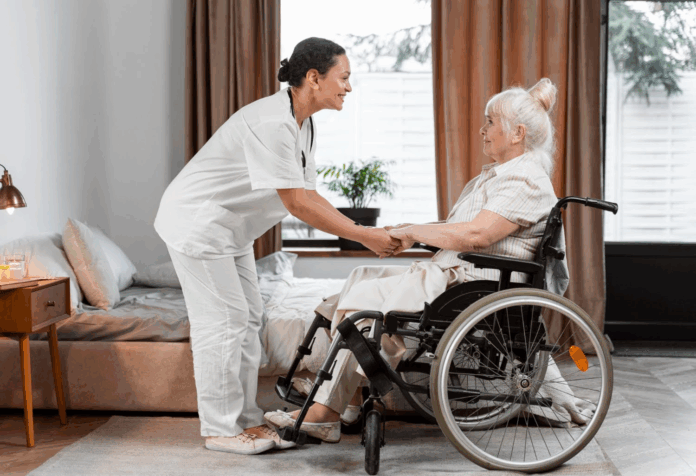The moment arrives quietly – a parent struggles with buttons, forgets medication, or shows signs of neglect in their once-pristine home. These subtle shifts signal changing needs that families must address with sensitivity and wisdom. Choosing appropriate care stands among the most consequential decisions families make, one that profoundly shapes dignity, safety, and happiness during vulnerable years. In this article, we offer practical strategies to evaluate needs and select quality personal hygiene assistance that honors your loved one’s preferences while meeting essential requirements.
Contents
- Recognizing the Initial Need for Support
- Conducting a Comprehensive Needs Assessment
- Exploring Available Care Models
- In-Home Care Services
- Adult Day Care Programs
- Assisted Living Communities
- Evaluating Provider Quality and Compatibility
- Provider Credentials and Standards
- Compatibility Assessment Techniques
- Financial Planning and Resource Navigation
- Cost Structures by Care Type
- Payment Resources Beyond Private Funds
- Legal Framework for Care Management
- Implementing and Monitoring Effective Care
- Care Implementation Strategies
- Monitoring for Quality and Appropriateness
- Adaptation to Changing Needs
- Creating Sustainable Care Partnerships
Recognizing the Initial Need for Support
Family observations often provide the first hints of changing capabilities. The signs emerge gradually – a kitchen with unwashed dishes, unopened mail accumulating, or missed appointments that would never have been forgotten before. These everyday observations warrant attention when they form patterns rather than isolated incidents.
Watch particularly for:
- Unusual household disarray from previously organized individuals
- Wearing the same clothes repeatedly
- Medications left untaken or incorrectly sorted
- Cancelled social engagements without clear reasons
- Unexplained bruises suggesting falls
- Declining personal appearance from established norms
These observable changes typically trigger the realization that some form of elderly assistance might benefit your loved one. This recognition phase often brings complicated family dynamics to the surface. Aging parents may view offered help as an unwelcome acknowledgment of decline. Adult children might struggle with role reversals or disagreements about appropriate next steps.
Productive conversations at this stage focus on enhancing safety and quality of life rather than removing independence. Framing discussions around specific observed challenges rather than general decline helps maintain dignity during these sensitive exchanges.
Conducting a Comprehensive Needs Assessment
Once initial signs prompt consideration of assistance, systematic assessment creates a foundation for appropriate care planning. This evaluation moves beyond casual observation into structured examination across multiple domains.
A thorough physical capabilities assessment examines:
- Transfer abilities (moving between positions and surfaces)
- Ambulation range and stability
- Reach and grip strength affecting self-feeding
- Visual and hearing acuity impacting safety
- Swallowing and chewing function
- Continence management
- Stamina throughout daily activities
Cognitive function assessment explores:
- Short and long-term memory patterns
- Executive functioning (planning, organizing, completing tasks)
- Judgment in potentially dangerous situations
- Ability to follow multi-step instructions
- Recognition of familiar people and places
- Financial management capabilities
Environmental evaluation considers:
- Home accessibility barriers
- Fall hazards in living spaces
- Medication management systems
- Food preparation safety
- Transportation access
- Emergency response capabilities
Healthcare professionals bring valuable expertise to this assessment process. Geriatricians evaluate medical conditions affecting function. Occupational therapists analyze specific task performance and suggest adaptive techniques. Social workers identify community resource opportunities that complement family efforts.
These professional insights, combined with family observations, create a comprehensive care profile defining exactly which tasks require assistance and which remain within independent capabilities. This nuanced understanding ensures personal hygiene assistance targets genuine needs while preserving autonomy wherever possible.
Exploring Available Care Models

The senior care spectrum offers various approaches, each structured differently to address specific need patterns and preferences.
In-Home Care Services
This model brings qualified caregivers directly to your loved one’s residence, preserving familiar surroundings while adding targeted support. Key characteristics include:
- Service delivery in the existing home environment
- Staff-to-client ratio is typically 1:1
- Scheduling ranges from hourly visits to live-in arrangements
- Service scope spans from light housekeeping to comprehensive personal care for elderly individuals
- Cost structure based primarily on hourly rates and service intensity
This option particularly suits seniors with strong home attachment, those needing assistance at irregular intervals, or individuals with specific environmental preferences that facilities cannot accommodate.
Adult Day Care Programs
These non-residential programs provide structured activities and supervision during specified hours in community-based settings. Defining features include:
- Communal setting with peer interaction opportunities
- Staff-to-client ratios typically 1:6 or 1:8
- Operation primarily during business hours
- Programming emphasizing socialization and engagement
- Cost structure usually based on daily attendance rates
Day programs work well for seniors who benefit from social stimulation, those with family caregivers needing daytime respite, or individuals seeking structured activities without residential changes.
Assisted Living Communities
These residential settings combine private or semi-private living quarters with available support services. Characteristic elements include:
- Apartment-style housing with communal dining and activity spaces
- Staff availability 24/7 with scheduled bathing and grooming care
- Community-based social programming
- Tiered service packages based on assistance levels
- Cost structure combining base housing fees with care level charges
Assisted living suits seniors needing daily assistance across multiple activities, those valuing community connections, or individuals preferring consolidated services under one roof.
Evaluating Provider Quality and Compatibility
Once you’ve identified which care model aligns with your loved one’s needs, finding specific high-quality providers becomes the focus. Effective evaluation combines objective credentials with subjective compatibility factors.
Provider Credentials and Standards
Begin with verifiable qualifications that indicate basic competence:
- Licensing compliance with state regulations
- Accreditation by recognized industry organizations
- Staff certification requirements and verification processes
- Background screening protocols
- Liability insurance coverage
- Staff-to-client ratios and supervision structures
- Training requirements specific to dementia or medical conditions
- Staff turnover rates compared to industry averages
These measurable standards establish a provider’s baseline capabilities before considering more nuanced compatibility factors.
Compatibility Assessment Techniques
Beyond credentials, evaluate how well providers match your loved one’s specific needs and preferences:
- Compatibility interviews exploring communication styles and care philosophies
- Direct observation during trial periods or facility visits
- Structured scenarios testing problem-solving approaches: “How would you handle resistance to hygiene assistance?”
- Feedback from current clients with similar needs
- Analysis of activity calendars against known preferences
- Evaluation of staff interactions with existing residents
- Assessment of physical environment suitability for specific limitations
This evaluation focuses on how providers deliver services rather than simply what services they offer, examining interpersonal dynamics, problem-solving approaches, and alignment with your loved one’s temperament.
Care arrangements require significant financial planning alongside quality assessment. Understanding various payment options and assistance programs helps families develop sustainable care plans.
Cost Structures by Care Type
Different care models generate distinct expense patterns:
- In-home care: Hourly rates ($20-35) plus agency fees, with total costs determined by weekly schedule intensity
- Adult day services: Daily rates ($70-150) plus transportation expenses
- Assisted living: Monthly fees ($3,500-7,000+) structured as base rates with tiered care packages
These base figures provide starting points for budgeting discussions rather than comprehensive cost predictions.
Payment Resources Beyond Private Funds
Multiple assistance pathways exist beyond direct family payment:
- Long-term care insurance policies with specific coverage triggers and benefit structures
- Veterans Affairs Aid & Attendance benefits for eligible veterans and sometimes spouses
- Medicaid waiver programs covering specific services for financially qualifying seniors
- Tax deductions for qualifying care expenses
- Life insurance conversion options, including life settlements or viatical arrangements
- Reverse mortgage possibilities for home equity utilization
- Community-based subsidy programs through local organizations
These resources often involve complex eligibility requirements and application processes. Elder law attorneys and geriatric care managers can provide valuable navigation assistance through these specialized systems.
Legal Framework for Care Management
Essential legal documents facilitate smooth care transitions and decision-making:
- Healthcare directives specifying treatment preferences
- Medical power of attorney designating healthcare decision-makers
- Financial power of attorney enabling resource management
- Representative payee arrangements for benefit management
- Care contracts formalizing family care compensation, when applicable
These instruments require preparation before capacity diminishes to ensure they accurately reflect the individual’s preferences.
Implementing and Monitoring Effective Care

Even the most carefully selected care arrangements require ongoing oversight and adjustment. Effective monitoring systems catch small issues before they become significant problems.
Care Implementation Strategies
Successful care transitions include:
- Graduated introduction of new caregivers or environments
- Clear communication of care plan details to all involved parties
- Establishment of concrete feedback mechanisms
- Scheduled adjustment periods with planned reassessment points
- Documentation systems tracking care delivery and response
These structured approaches reduce transition stress and increase acceptance of new assistance.
Monitoring for Quality and Appropriateness
Ongoing oversight ensures care quality through:
- Direct observation during varied times and situations
- Private conversations with care recipients about satisfaction
- Tracking physical health indicators (weight, skin condition, medication effectiveness)
- Monitoring emotional well-being indicators, including engagement levels
- Regular care team meetings with all involved parties
- Periodic professional reassessment as conditions change
This monitoring focuses on both technical care delivery and quality-of-life indicators beyond basic physical needs.
Adaptation to Changing Needs
Care plans require evolution alongside changing needs:
- Scheduled reassessment triggers built into care plans
- Adjustment protocols for common condition changes
- Transition planning for potential care level changes
- Backup systems for caregiver absence or emergency situations
- Communication pathways for reporting changing needs
This adaptability ensures care arrangements grow with evolving requirements rather than becoming quickly outdated.
Creating Sustainable Care Partnerships
Finding appropriate care for aging loved ones combines methodical assessment, careful provider selection, thoughtful financial planning, and consistent monitoring. Families who approach this process systematically create arrangements that genuinely enhance quality of life while preserving dignity.
Remember that excellent personal hygiene assistance and broader care services should support personhood beyond physical needs. The most successful arrangements respect preferences, maintain maximum independence, and nurture meaningful relationships. Selected with care and monitored attentively, these services help elderly family members continue living with purpose and connection.
Take time to understand your loved one’s wishes and include them in decisions to the extent their capacity allows. Through thoughtful planning and implementation, families ensure their elders receive the specific support that honors their lives while meeting essential care needs.


























